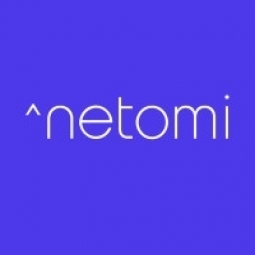Download PDF
Aventon's Customer Support Transformation with AI
Applicable Functions
- Procurement
- Sales & Marketing
Use Cases
- Demand Planning & Forecasting
- Leasing Finance Automation
The Challenge
Aventon, an innovative electric bike company, was facing a significant challenge in managing its customer support requests. During the pandemic, the demand for their e-bikes skyrocketed, leading to an increase in customer support requests. The small team of agents was handling an average of 500 tickets per day, with email response times averaging 1.5 - 2 weeks. The situation worsened during the peak season in June 2021, when they had to disable their chat capabilities due to a backlog of 2,400 tickets. Aventon needed a solution to scale its operations and connect with customers on their preferred channels while also deflecting repeatable queries from live agents. They were looking for a solution that could easily integrate with their existing tech stack, which included Zendesk (CRM), Shopify (order management), and Helpjuice (knowledge base).
About The Customer
Aventon is a company that specializes in the production of innovative electric bikes. During the pandemic, the demand for their products increased significantly, leading to a surge in customer support requests. The company has a small team of agents who were overwhelmed with the volume of tickets, averaging 500 per day. Aventon believes in the power of technology and automation and adheres to a 'less talk, more do' philosophy. They were looking for a solution that could help them scale their operations, connect with customers on their preferred channels, and deflect repeatable queries from live agents.
The Solution
In late 2021, Aventon introduced a Netomi AI-powered assistant, Bolt, on chat and email. Bolt was designed to swiftly resolve repeatable queries spanning both pre-sale and post-sale, including questions such as 'Can I get an estimated shipping date on my order?' and 'How and where do I install the reflector on my bike?'. This AI-powered assistant was able to deflect 50% of queries over chat and 15% over email, significantly reducing the workload on the customer support team. With the ability to offload repeatable issues to Bolt, agents could now focus on tackling complex and nuanced requests, offering 24/7 support. This solution not only improved the efficiency of the customer support team but also enhanced the customer experience by reducing response times.
Operational Impact
Quantitative Benefit
Related Case Studies.

Case Study
Digital Transformation in Insurance: A Case Study of Menora Mivtachim
Menora Mivtachim, one of Israel's largest pension fund and insurance carriers, was facing a significant challenge due to demographic trends in Israel. The growing rate of retirement planning and services was putting unprecedented pressure on the already strained insurance sector. The pension claims process was bottlenecked with complexities, bureaucracy, and errors. Menora Mivtachim's existing pension process was heavily manual and spreadsheet-based, requiring a team of 10 full-time employees to manage. The process involved gathering applicant information, conducting personal surveys, compiling bank information, and finalizing agreements. To leverage the growing opportunity in the retirement sector and position themselves as innovative insurtech leaders, Menora Mivtachim needed to digitalize their process, streamline the claims experience, and reduce quote times through automated processes.

Case Study
Automation in Mining: Unleashing Productivity and Efficiency with 5G
The mining industry, a significant contributor to global economic activity with revenues exceeding USD 500 billion, is facing a challenge of improving efficiency and profitability. The industry is gradually shifting its focus towards automation as the next area of opportunity. Boliden, one of the world's most successful mining companies, operates the Aitik mine, the largest open pit in Europe. The Aitik mine is expanding, and with the increase in production from 36 million metric tons of ore to 45 million metric tons, the amount of rock removed will also increase significantly. However, increasing the number of machines required for rock removal in a busy mine is not a straightforward task. Additionally, every blast creates toxic gases that need to dissipate before humans can enter the area and begin excavation. The challenge lies in improving efficiency, managing the increased production, and ensuring safety in the harsh mining environment.

Case Study
ANZ Bank's Digital Transformation with Nintex Advanced Workflow
ANZ Bank, one of the top 50 banks in the world and the fastest-growing bank in Indonesia, was facing a challenge with its rapidly increasing transaction volume. The bank's existing business processes and workflow were becoming overwhelmed. Like most banks in Indonesia, ANZ was manually handling document submission and verification. Customers filled out paper loan applications and supporting documents, then delivered them to bank branches by mail or courier. Branch officers traveled to the bank’s headquarters or used postal mail, email, and phone calls to submit loan documents for verification. Lost or inaccurate documents created more emails and phone calls. Additionally, ANZ had to adhere to strict verification and financial regulations, including the Foreign Accounts Compliance Act. This act requires that all banks outside the United States provide key information about U.S. clients, including citizenship validation, to the Internal Revenue Service–a complex yet crucial process.

Case Study
Streamlining Agricultural Automation with Eaton’s Package Solution
Grossi Electric, a full-service electrical contracting company, was tasked with facilitating the hulling, dehydrating, and preparation processes at a walnut processing plant in Waterford, California. The company aimed to explore innovative options for creating cleaner and more efficient control panels that would eliminate the intensive time, labor, and costs associated with excessive point-to-point wiring. As a rapidly growing electrical contracting company, Grossi Electric was also concerned about managing risk and cost while attempting to establish a new and unfamiliar service offering in a mature market for control products. The walnut processing plant presented a prime learning opportunity for the company to discover the best way to build more tailored control panels for its customers. The challenge was to enable a lean automation process that was smarter, simpler, more effective, and of unique advantage for clients.

Case Study
Gexa Energy and AutoGrid's Innovative Demand Response Programs in ERCOT
Gexa Energy, a leading retail electricity provider in Texas, was seeking to introduce new demand response programs for its commercial and industrial customers in the Electric Reliability Council of Texas (ERCOT) market. The challenge was to provide a platform that would allow these customers to lower their energy bills by adjusting their energy consumption during peak energy demand or high wholesale electricity prices. The solution needed to be intelligent, scalable, and offer both manual and automated options for adjusting energy consumption. The demand response programs needed to include Emergency Response Service (ERS), Real-Time Price Response (RTPR), and 4 Coincident Peak (4CP).

Case Study
Dell's Transformation: Boosting HR Productivity with RPA and Workday
Dell Technologies, a global tech giant with over 160,000 employees, was grappling with high-volume and repetitive transactional HR processes. The company was seeking to improve efficiency and cost-effectiveness while freeing up HR employees for higher-value, strategic work. The challenge was to eliminate transactional work for end-to-end processes such as open requisition recruiter assignments, onboarding process reminders and status updates, and offer status management. This would allow HR employees to focus more on person-to-person interactions.





